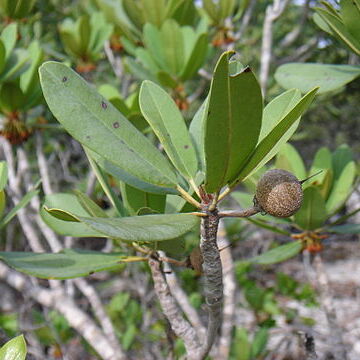Shrubs or trees. Stems not armed, tomentose or glabrous. Leaves persistent, alternate; stipules present or absent; petiole present; blade: base rounded to cuneate, apex retuse to acuminate, surfaces hairy or glabrous. Inflorescences fascicles or solitary flowers. Flowers: sepals 6 in 2 whorls of 3, outer valvate, darker, abaxially densely hairy; petals 6[-9], white or yellow, glabrous or sparsely hairy, lobes undivided, shorter than or exceeding corolla tube; stamens 6[-12], distinct [basally connate with staminodes]; staminodes [absent or 1-]6[-12], alternate with stamens, erect or incurved, petaloid, triangular-lanceolate, glabrous or hairy; pistil 5-12 [-14]-carpellate; ovary 5-12[-14]-locular, glabrous or hairy; placentation axile or basiventral. Berries brown [yellow-green, orange, red, black, or purple], ellipsoid or depressed-globose to subglobose, glabrous. Seeds [1-]2-10, brown, laterally compressed; hilum linear; embryo vertical; endosperm present. x = [12,] 13.
Trees, unarmed. Leaves alternate; blades coriaceous, the primary laterals numerous, fine, rather closely spaced, often subobscure, straight (not arcuate ncar the margin). Flowers fasciculate in the axils of leaves or leaf-sc ars or solitary; sepals usually 6, infrequently 4 or 8, in 2{ whorls of (42)3(4); corolla-lobes as many as the sepals, each with a pair of dorsal ? petaloid appendages arising from the base, occasionally these fused to the lobes or lacking; staminodes usually petaloid, rarely minute or replaced by functional-stamens; stamens as many as corolla-lobes or rarely twice as many (morphologically 2 whorls), typically at-tached to the corolla at the juncture of the tube and lobes; ovary often pubescent, 6 to 14-celled, the ovules affixed laterally. Fruit 1 to several-seeded, fleshy; seed compressed, the scar rather elongate, lateral or basilateral (but equalling or sur-passing the middle of the seed), more or less linear, the endosperm copious.
Trees or shrubs. Leaves leathery to almost leathery, densely lateral veined; stipules early deciduous. Flowers axillary, clustered. Sepals 6, in 2 whorls. Corolla lobes 6, outside each with 2 lobular appendages. Stamens 6; staminodes 6, alternating with corolla lobes, ovate, apex acuminate, irregularly serrate, fimbriate to lobate. Ovary 6--14-locular. Fruit a berry, 1--6-seeded. Seeds compressed, scar lateral and elongate.
Staminodes 6, alternating with stamens, glabrous, petaloid to ligulate, dentate or laciniate, erect, not forming a sheath round the gynoecium.
Corolla of 6 members joined at the base into a short tube, each member comprising a median and two lateral segments.
Sepals 6, in two dissimilar whorls of 3, the inner ones thinner in texture and paler than the outer.
Seeds ellipsoid to obovoid, with narrow linear or large and broad lateral scar; endosperm abundant.
Flowers often numerous, borne in axils of current and recently-fallen leaves, long-pedicellate.
Ovary with 6–16 locules, densely pilose, with long slender glabrous-style.
Leaves often with oppressed silvery indumentum on lower surface.
Trees and shrubs, with leaves often borne in terminal clusters.
Fruit a fleshy or leathery berry, 1-several-seeded.
Stamens 6, epipetalous; anthers extrorse.
Stipules absent or soon caducous.

